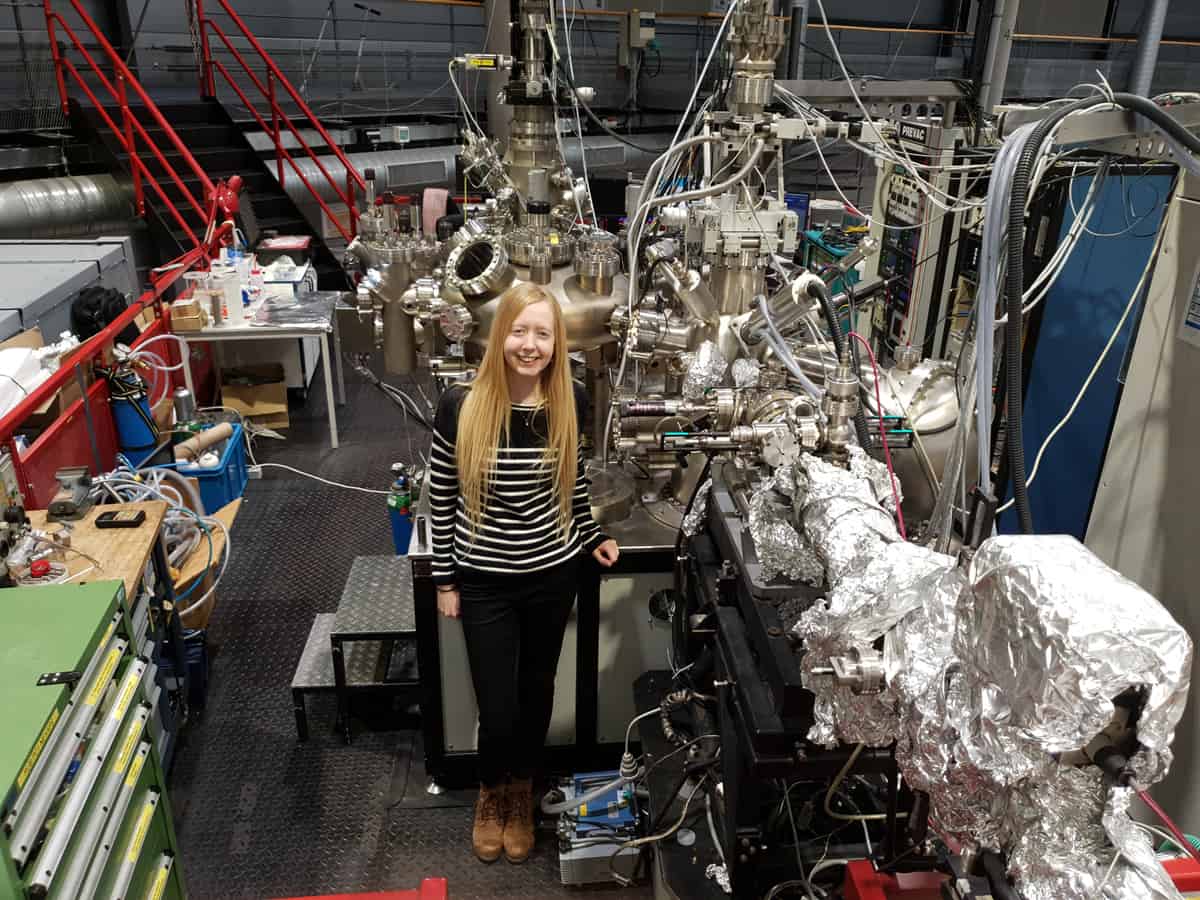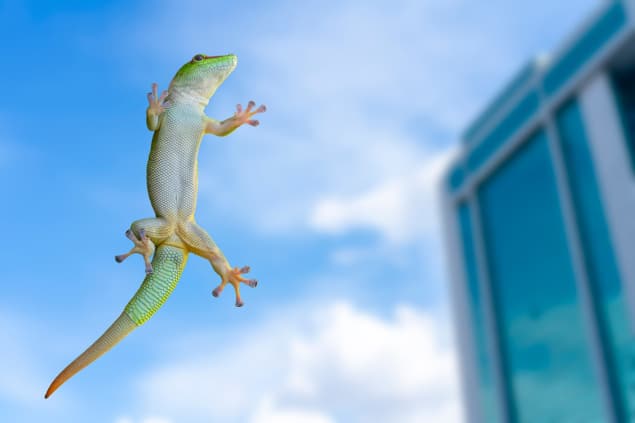From geckos’ feet to Formula 1: how surface science underpins our world
17 Nov 2021 Jess Wade
Taken from the November 2021 issue of Physics World where it first appeared under the headline "Get stuck in". Members of the Institute of Physics can enjoy the full issue via the Physics World app.
I have to come clean about something. I thought I understood the science of surfaces. As a physicist working on nanomaterials for light-emitting diodes (LEDs), solar panels and sensors, I literally spend my days playing with polymers. The devices I build are multi-layered structures, where you have to really know what’s going to happen when you deposit one layer on top of another. For example, if the light-emitting layer of an LED doesn’t stick well to the electrodes below, then the pixels on our mobile phone and TV screens won’t light up. So, this being the field I work in, I thought I had a pretty good grasp of surface science. But within the first few pages of Sticky: the Secret Science of Surfaces by physicist and author Laurie Winkless, my confidence in my knowledge of surface science started to come unstuck.
It has been four years since Winkless’ first book, Science and the City, introduced the public to the science of the metropolis. While her enthusiasm and charm are apparent throughout both books, Sticky feels like the more grown-up sibling. Rather than providing a superficial overview of all the relevant scientific topics, Winkless takes the time to unpack those she is most interested in. The writing, including the technical descriptions, feels effortless, benefiting from her years of experience in science communication.
Unlike many popular-science books, Sticky is not just a disparate list of facts about forces. Every chapter, from “A gecko’s grip” to “Break the ice” is a story, masterfully assembled into an accessible, clear and highly engaging manuscript. Winkless’ writing is informed by discussions with a diverse group of scientists and engineers, and the unparalleled excitement of discovery is evident in every interaction. Alongside these interviews, the author provides an enticing (but not overwhelming) level of detail, introducing readers to the scientific method, peer review and even the politics of scientific theories. The science of the sport of curling, for example, is a hotly debated topic that has divided physicists for the past 30 years and fuelled “Broomgate” – the 2015 controversy over whether a new hi-tech broom was changing the fundamentals of the sport too much.
Winkless doesn’t shy away from complicated topics, such as fluid dynamics, organic chemistry and geophysics, but instead makes them relevant to her audience. The topic itself is ubiquitous by nature, so there’s something in the book to pique the interest of everyone from academic researchers to fans of Formula 1. For scientists, the properties of surfaces are an essential consideration. Double-sided Sellotape (of the appropriate stickiness) is required for nanoscale imaging using atomic force microscopes; carbon tape is crucial for mounting samples inside vacuum chambers; and Kapton tape is necessary for soldering. The “Scotch tape method”, by which tape is stuck to graphite and peeled off again, taking tiny fragments with it, paved the way for the graphene revolution. I’d even go as far as saying I’ve never met an experimental physicist who doesn’t rely on Blu Tack, whether that is to hold together pieces of equipment, secure a substrate to a stage or safely package samples to send to collaborators.
But adhesion principles also show up in everyday life and culture far beyond the lab, from the frescoes of Italian Renaissance art to non-stick frying pans and swimwear that helps you glide through the water more easily. So, while a truly brilliant read for scientists, I think Sticky appeals to a very broad audience. Irrespective of your level of expertise, Winkless’ language is not remotely patronising. The analogies are well thought through and the examples are appropriate. In fact, she somehow manages to make the mundane beautiful: “curling is a curious ballet of stones, brooms and ice”. For the super-keen, Winkless provides a comprehensive reading list (apparently just a handful of the 900+ references she read when researching the book) for further study.
My favourite chapter explores the gecko’s impressive ability to cling to even very smooth surfaces, which Winkless describes as the “smartest on-off adhesive in the world”. Little did I know that the attempt to unravel the mechanisms behind this creature’s grip has spanned two centuries, provided fuel for entire research careers and inspired a lot of questionable hypotheses.
Working out the hierarchical adhesive systems of geckos has presented a truly interdisciplinary research effort that is inspiring the design of futuristic robots and reusable adhesive tapesREAD MORE

The first theory – that geckos cling to surfaces through suction from the lamellae in their feet – was debunked a century after it was proposed, when it was shown that geckos maintain their grip even at vanishingly low air pressures. Next came the “climber’s boot” hypothesis: that densely packed hairs called setae on the gecko’s toes act as tiny hooks that grip onto bumps and grooves. This proposal was dismissed when experiments revealed that geckos can firmly attach to ultra-smooth surfaces with very low surface roughness. More theories followed, involving electrostatics (think sticking a balloon on a wall after rubbing it on your hair) and friction. It turns out that geckos stick to surfaces through a complicated interplay of many physical phenomena including Van der Waals forces and nanoscale networks of setae known as spatulae. Incredibly, they can detach their feet six times faster than you can blink. Working out the hierarchical adhesive systems of geckos has presented a truly interdisciplinary research effort that is inspiring the design of everything from futuristic robots to reusable adhesive tapes.
It will no doubt surprise fans of friction that there are still so many unknowns – such as how exactly curling works, or how we can quantify the slipperiness of swimmers – that continue to perplex scientists. So although this research field has existed for hundreds of years, it remains a lively and cutting-edge one. When I picked up Sticky, I wasn’t sure what I was in for, but I remained glued to every page.
2021 Bloomsbury £16.99hb 336pp
from physicsworld.com 17/11/2021

Δεν υπάρχουν σχόλια:
Δημοσίευση σχολίου